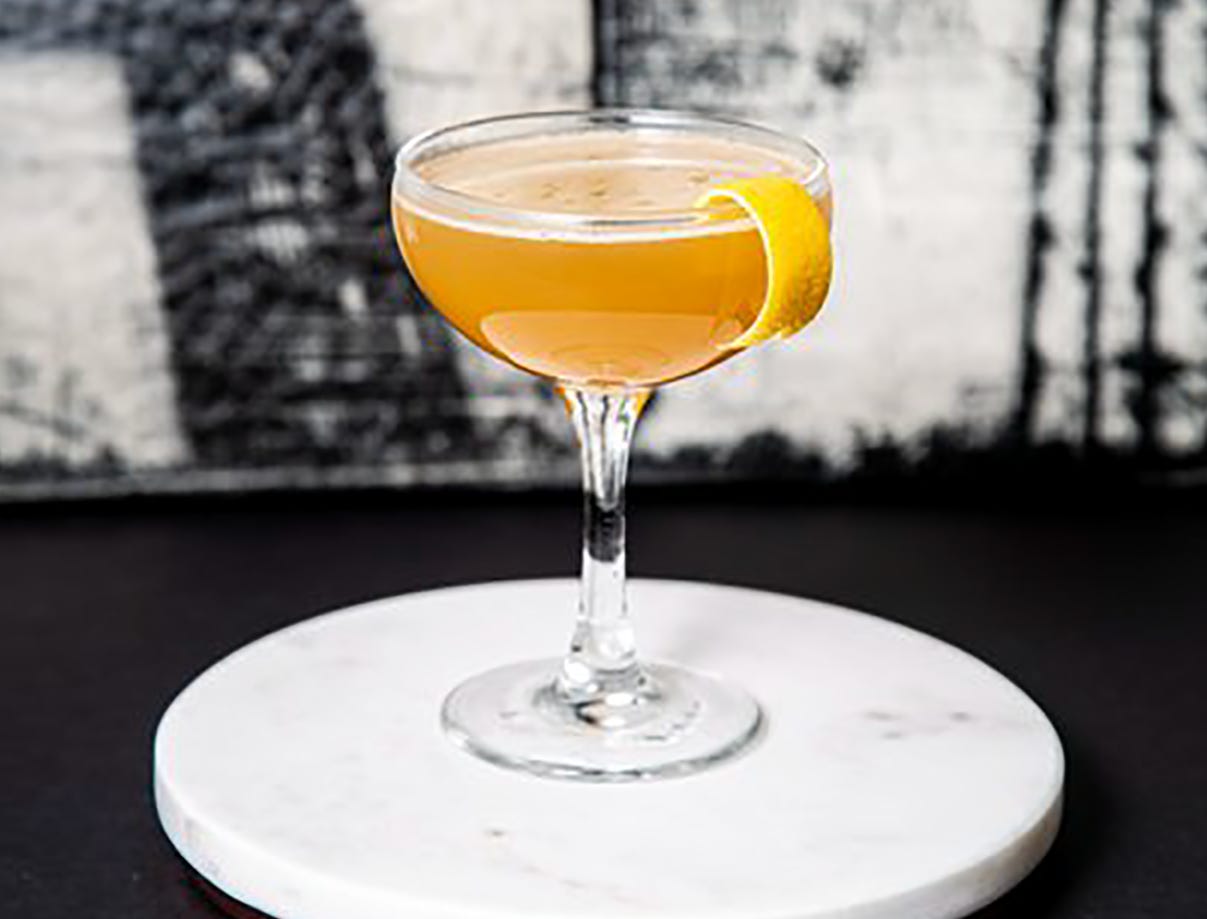DOTD For Friday, November 7, 2025
A Drink To Salute A Two-Time Nobel Winner, Something Donald Will Never Ne...
Today’s DOTD - Drink Of The Day - is a Champs Elysees Cocktail - pronounced “SHANZ-eh-lee-ZAY” - inspired by the birthday of legendary scientist Marie Curie.
Curie was one of the most distinguished scientists to ever live. She was the first woman to win a Nobel Prize, the first person and only woman to win the Nobel Prize twice, the only person to win the Nobel Prize in two separate areas of science, the first woman professor at the Sarbonne, and during World War I she developed the first mobile x-ray units. In other words, she was brilliant.
Maria Salomea Sklodowska was born on November 7, 1867 in Warsaw, Poland. She graduated from the equivalent of high school with a gold medal, the equivalent of being first in her class. Unfortunately, the misogyny of the time meant higher education was illegal for women in Poland. So she attended what is commonly known as the Flying University, an underground educational school.
After completing her studies there, she left Poland for France, - where she adopted the French spelling of her name, Marie - in 1891. There she continued her studies at the University of Paris and earned a degree in physics. She also met Pierre Curie, another scientist, and he began to court her. He wanted to marry her, but she refused, as she planned to move back to her native Poland. When she tried to move back, she was denied a position at Krakow University, due to sexism in academia. That rejection led her back to Paris, where she changed her mind, and got married to Pierre.
Marie and Pierre both became employed at the School of Chemistry and Physics in Paris. There they didn’t have a proper lab, so they worked in a shed that adjoined the school, researching the just-discovered rays emitted by uranium. In their research, they noticed that a mineral called pitchblende, which contains uranium, was a lot more radioactive than pure uranium. Her peers doubted her, but Marie was convinced the pitchblende contained another new, even more radioactive element.
Marie & Pierre continued their research, discovering a new element Marie named polonium, in honor of her native Poland. But they also realized there was something more, and discovered radium in 1898. Marie became a scientific report generating machine, putting her work into many scientific publications, and she soon became the first female faculty member at the École Normale Supériure, the most prestigious higher education institution in France.
The Nobel Prizes
Marie Curie did all of this before even completing her Ph.D., which was awarded to her in 1903. That year, Marie and Pierre Curie, together with Henri Becquerel, were awarded the Nobel Prize in Physics. Their prize that year was for their work on radioactivity. However the new elements of the periodic table they’d discovered were not mentioned in the award.
In 1906, Pierre died in a road accident, but Marie carried on. In 1911 she was awarded another Nobel Prize, this time in Chemistry, for her discoveries of polonium and radium. That made her the first person and only woman to ever win two Nobel Prizes.
While the work of Marie Curie was amazing, she sadly died of aplastic anemia, almost certainly caused by radiation exposure. Even today her lab notebooks are radioactive enough to be stored in lead-lined boxes. Her former lab outside Paris remains a bio hazard and has been nicknamed ‘Chernobyl on the Seine.’ She did at least receive the honor of being interred in the national mausoleum in Paris, the Panthéon - though she was interred in a lead-lined coffin, as her body itself remains highly radioactive, as it will for the next 1600 years.
While you won’t need a lead-lined glass for today’s Drink Of The Day, we do hope this beverage will give you a warm glow.
Ingredients
Here’s what you’re going to need for this drink:




